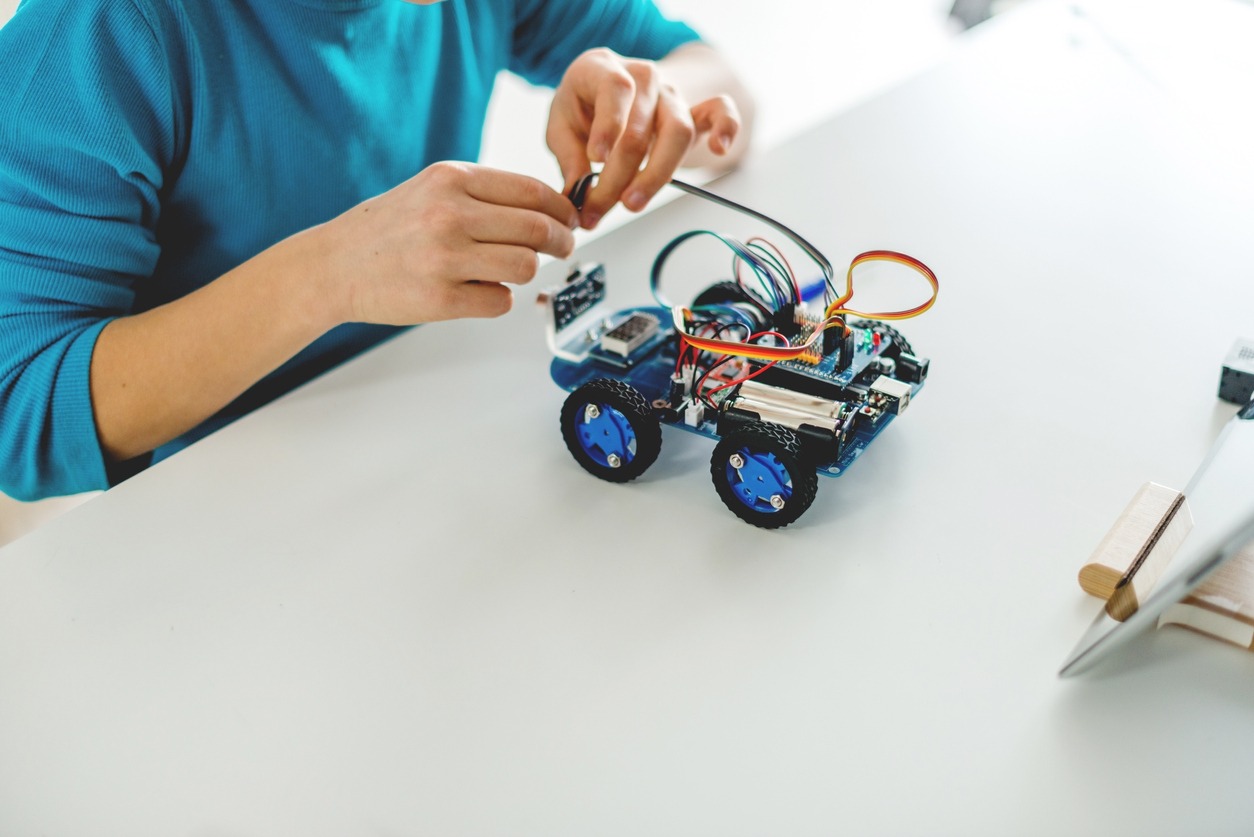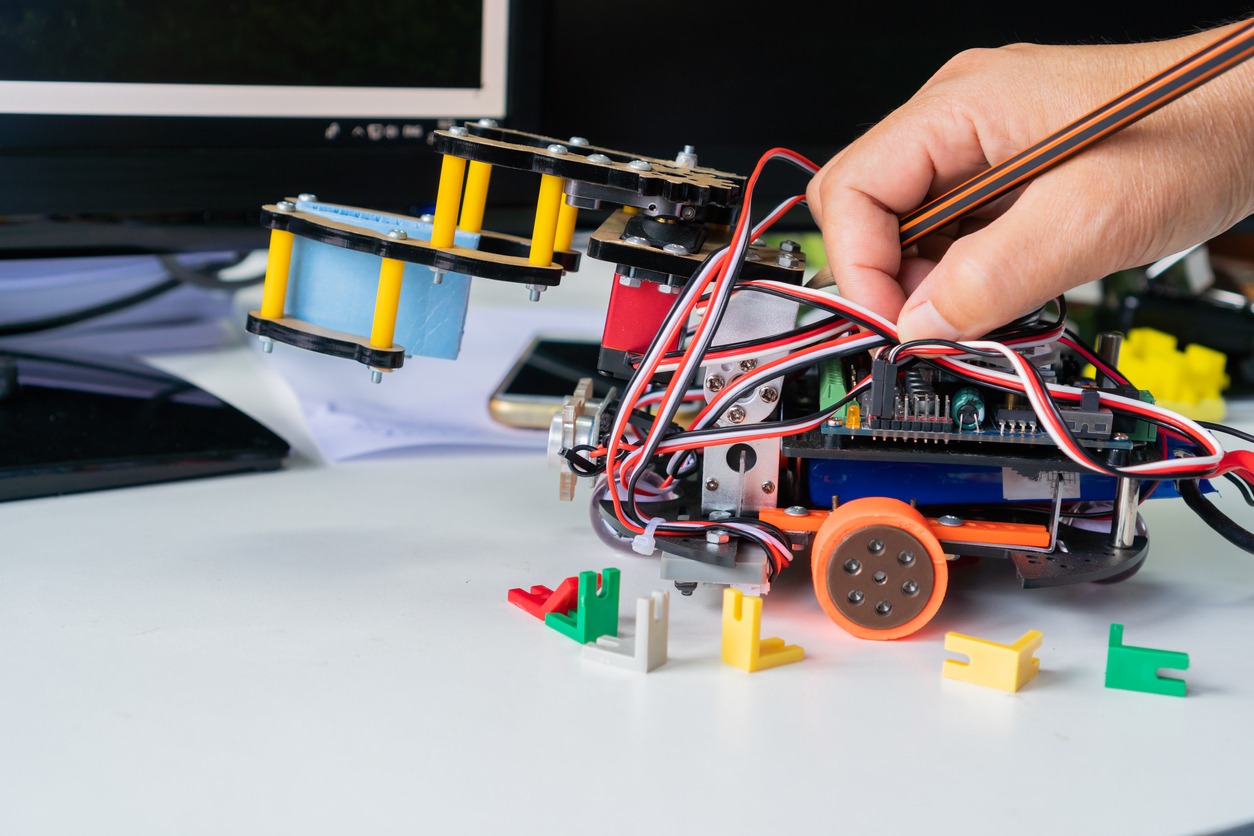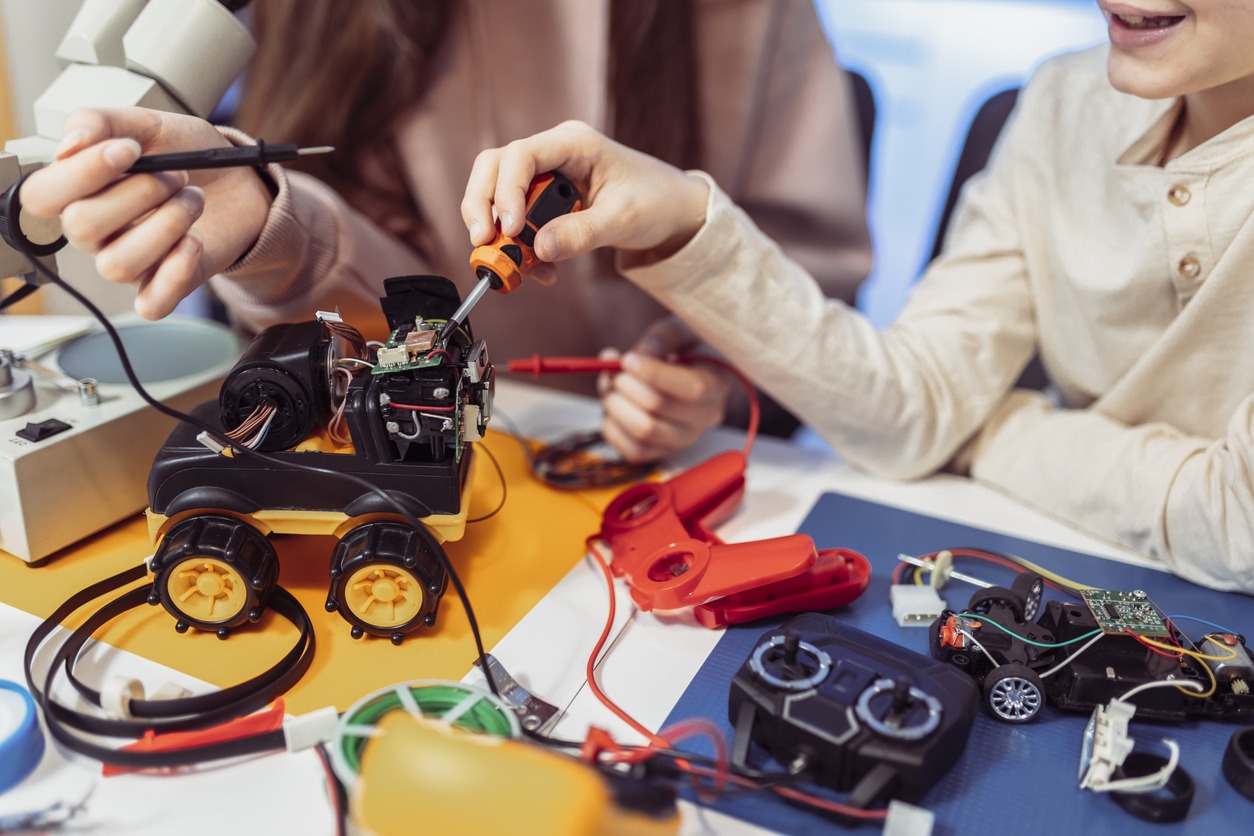With the development of technology and the introduction of AI, the way people work has forever changed. Robotics is one of the few technologies that is changing how our world operates. It is imperative that we keep up with the times and prepare ourselves and future generations.
There are many different ways that students are being introduced to the field of robotics. Still, it must be done in a way that is simple and easy to understand. This can be done by devising a curriculum using methods, tools, and teaching methods that will enable the students to learn about this field. Since most young children do not take a lot of interest in STEM, if you teach them engagingly, you can help cultivate an interest, which can help them flourish.
Advantages of Learning Robotics for Children
Robotics has advanced a great deal to the point where it has become a massive part of manufacturers, filmmakers, and homes. Due to these advancements, it is essential that you keep up with the times and that you also teach children about this field. There are many different advantages of introducing your child to robotics early.
Encourages Interest in STEM
Learning robotics allows you to take an interest in science and math, as robotics highlights the importance of having knowledge about these fields. By using concepts they learned while using and making a robot, they may be inclined to take more interest in these subjects. Additionally, learning robotics allows you to engage in practical learning rather than theoretical memorization, which can get boring.
By developing an interest in STEM, your child may discover other passions. This can be greatly beneficial and help them discover their true passions and what they want to do in the future.
Learn To Be a Problem-Solver
Robots require a certain level of patience because you need to program them in a way to solve real-life problems. Robotics encourages a child to think of multiple ways to solve a single problem and then choose the most efficient one. This allows them to hone their problem-solving skills. Additionally, when learning about robotics, they will have an ideal environment where they can make mistakes and then learn from them.
Robotics is also a great way to learn how to follow instructions. Since most robotic kits come with tools and instructions, the child will learn to follow instructions accurately. This will allow them to learn from their mistakes and how to fix errors that they have made.
Develops Skills For the Future
Through robotics, children can work on various basic skills that will help them throughout their life. This includes social skills and others that will help them stand out from the crowd and appear reliable in front of their employers. Since programming and IT skills in robotics have become an integral part of every organization, your child must have all the skills needed to explore and excel in this field.
Robotics also encourages creativity and curiosity, which are essential skills to have. By using the many robotic kits available on the market, children can start exercising their creative muscles early so that they can have out-of-the-box solutions for problems. This will help them stand out and excel at whichever career path they choose.
Hone Coding Skills
By learning robotics, your children can also hone their coding skills. This is because computer programming is essential to robotics, as you need to input codes to fulfill your commands. Children can hone their coding skills by continuously writing, testing, finding an error, and fixing it. This will help them get a headstart if they decide to pursue the field of computer science.
There are numerous coding robots that are available in toy stores and hobby shops. One of the best coding robots out there is the iRobot Root, and to know more about this particular product, check out our iRobot Root Coding Robot Review.
Categories of Robots for Classrooms
Four categories of robots are used in classrooms to help enhance students’ robotic and programming skills.
| Type of Robot | Description |
| Physically Coded Robot | These robots do not use screens but instead a physical means of coding. They are perfect for teaching robots in early childhood. They look like toys. |
| Introductory Programmable Robot | These robots are designed to introduce children to the idea of coding and software in an age-appropriate way. The coding is play-based. |
| Computer programmable robots | These robots are designed to be coded through a computer screen. They are for advanced learners that know the basics and are ready to move on to more challenging projects. |
| Kit-based robots. | These robots need to be assembled and come in kits that include structural elements, motors, sensors, mechanical elements, and a controller board. |
Simple Robotic Projects
When learning about robotics, you can only learn so much from lessons and books. You must carry out simple robotic projects as they equip you with basic engineering, science, and physics concepts. Here are a few simple robotic projects that you can undertake to understand the field better and get some hands-on experience.
Line-Following Robot
A line-following robot is interesting and relatively easy to make. These robots can detect a predetermined line and follow it with no deviation. Such robots require a digital IR sensor, and with the help of the Arduino IDE program, it can detect the drawn line and then run along it using its motor and wheels. This project is the best way for students to get familiar with motors and sensors and how they work.
If you want to create a line-following robot, you will need an evive, dual shaft BO motor, IR sensor, motor mount, acrylic base plate, and a wheel. You should also have a caster wheel, a few bolts, and a screwdriver. Ensure you give it a test run to ensure it is working.
Obstacle-Avoiding Robot
The opposite of a line-following robot is one that avoids obstacles. These robots are programmed to deviate from the path they follow when encountering an obstacle. The components used in those robots are pretty similar to the ones used in line-following robots. Still, it also includes an ultrasonic rather than a digital IR sensor to detect its path.
This robot is a basic form of a cleaning vacuum, and students can use their creativity to turn it into one.
Pick and Place Mobile Robot
A pick-and-place mobile robot is most commonly used in manufacturing. Still, students can easily replicate a simple version in an effort to learn the mechanism. Such robots greatly help in speeding up the assembly process as they can pick up and place parts from an incoming and outgoing conveyor belt. Despite sounding seemingly complex, it is a fun robotics project that can teach students about autonomous robots. It also helps them use the robots innovatively to do regular domestic tasks.
DIY Soccer-Playing Mobile Robot
To make robots that align with your hobbies and interests, you can also make a soccer-playing mobile robot. These are designed to mimic human dribbling and actually play the sport. Not only are these robots popular, but they are also super interesting as you can use them to host competitions and have soccer leagues.
Soccer-playing mobile robots are easy to assemble. Like most other robots, you will need two wheels, a caster wheel, multiple revive pieces, various bolts, an acrylic base plate, and a BO motor mount. The assembly is also relatively straightforward, making it a fun and easy project.
Make a Wall-Avoiding Robot
A wall-avoiding robot is another variation of the obstacle-avoiding one, but it is a little smarter and can detect walls in particular. These robots are commonly employed in major industries like space crafts, manufacturing, and auto industries. On a basic level, they are simple to make. They can be an interesting way to learn about the application and importance of industrial robots.
These robots work using an Atmega168 microcontroller, Arduino USB board, and other components.
DIY Gesture-Controlled Robot Using Smartphone
DIY Gesture-controlled robots using smartphones are designed to perform various actions. You can command them to do anything within their power from your smartphone. This means that whatever action you perform on the smartphone or whichever command you give it, it will do it. This is an excellent robot to try out with students, as it will most likely be a new experience. Additionally, it will allow them to see how they can combine two or more mediums, like smartphones and robots, to solve an issue. Ensure that you consult a proper guide for all the components you will need and the instructions you will need to follow.
FAQs
Is learning robotics good for my career?
Robotics plays an essential role in workplaces all over the world and has plenty of opportunities in the job market.
What is a good age to introduce children to robotics?
Since every child develops at a different age, no one age is perfect. Many believe that it is best to teach basic robotics and coding to children aged 6 in an easily digestible manner. Others believe it is better to start at either age 8 or 9.
What is the benefit of robotics in education?
Robotics can help young students develop mathematical and cognitive skills at an early age that they can transfer to other areas of learning. Additionally, robotics also enables you to teach children essential problem-solving skills that will greatly help them later in life. If robots or robotics classes aren’t offered in the school, parents can simply buy a robot kit for their children as a gift. Here are some Robot Gift Ideas for the Holidays to have a better idea on what robot to buy.
Conclusion
Robotics is an excellent skill to teach students; the earlier you start, the better you can instill these skills. They have many benefits and can be incredibly beneficial in helping them explore the field of robotics and possibly use their skills in real-life situations or in future careers. One of the best ways to learn robotics for students is to take on projects such as making Pick and Place Mobile Robots, Line-Following Robots, and more. Through building, coding, and playing with robots, students can learn many important skills for the future.



